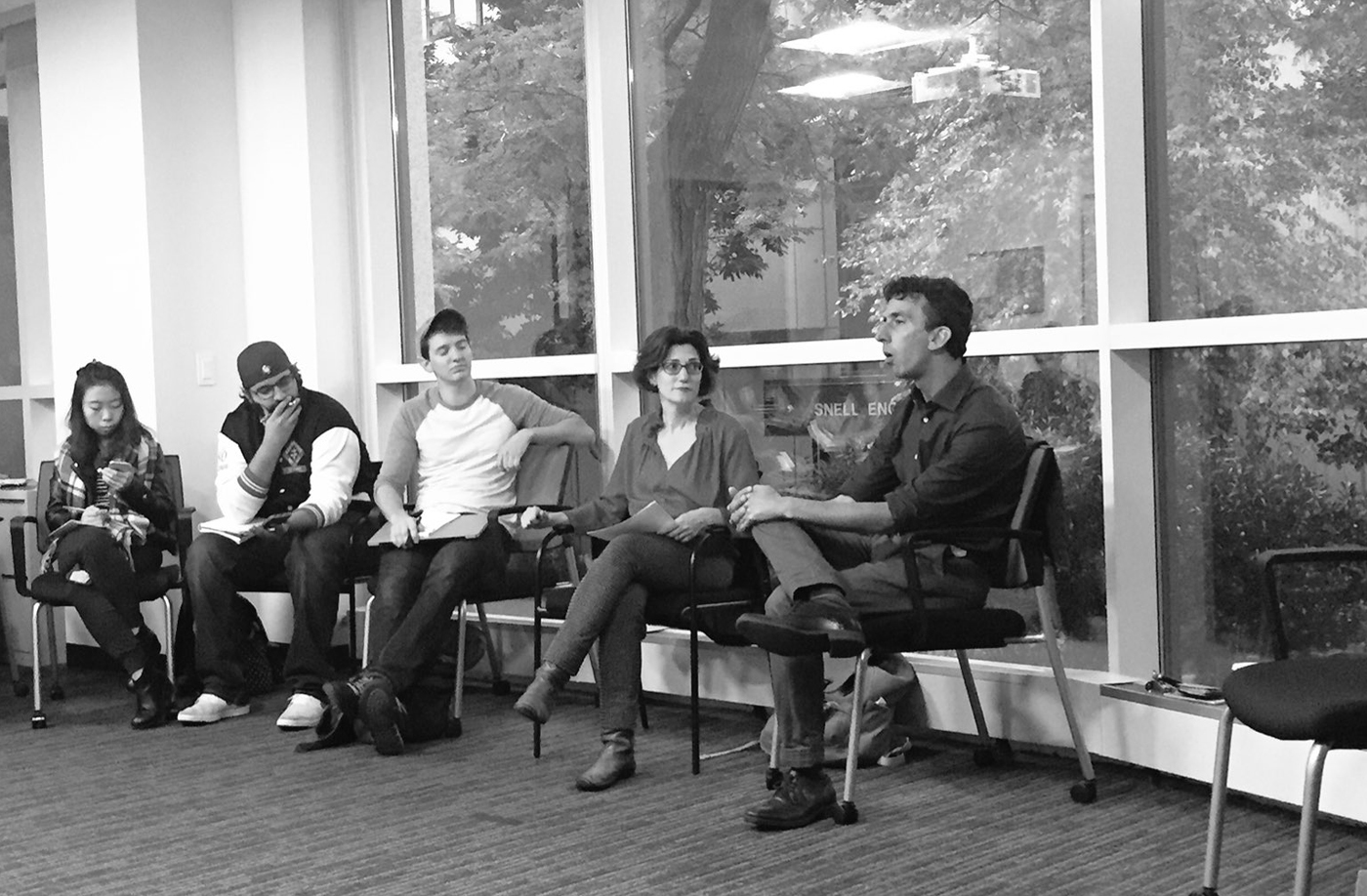Digital is a philosophy: David Skok on disrupting newsrooms
David Skok has been The Boston Globe’s digital leader for the past two years, serving most recently as managing editor and vice president for digital. On the eve of his departure from the Globe for his hometown paper, the Toronto Star as Associate Editor and Head of Editorial Strategy for its digital platforms, he leaves a legacy of digital reinvention and cultural change inside Boston’s most influential newsroom.
At the Globe he was able to experiment with some of the concepts he describes in his exploration of disruption in the journalism industry in an article he co-wrote in a Nieman Reports article entitled Breaking News with Harvard Business School’s Clay Christensen.
Skok recently spoke to Northeastern University School of Journalism students about his philosophy on digital, his thoughts on leadership in newsrooms, and the skills he believes today’s journalists need to possess. The following conversation has been condensed and edited.
How did you define your mission at the Globe?
For me, the goal has always been consistently about changing the mindset … about being a newsroom that is allowed to create a culture that is innovative and doesn’t just talk about doing that.
And how do you change that culture?
Culture is a nebulous, ephemeral word. When we think about culture and starting to change a culture, we have to get down to what do we mean by culture.
That means, first, looking at the resources you have and if you are devoting them to the right things.
Process is another piece. Analyzing what you have people doing day by day as they handle something and then hand it off to somebody else. Is the process something that is changeable? In order to that, you actually may have to move people to different seatings, or re-prioritize or re-incentivize people.
That drives you to the third piece, which is the priorities. You can say you want to be a digital newsroom, but the second that you have a Page 1 story that does really well or win a contest prize for something, and you don’t mention that that project was as much about digital as it was print or anything else, you are perpetuating the old culture in your priorities. Priorities are as much about what you don’t say as they are about what you do say.
https://twitter.com/dskok/status/379997381389189120
If you say you want to be a digital newsroom, but you are allocating 75 to 85 percent of your resources to print, you can talk about being a digital newsroom as much as you want, but you are never going to change that culture.
So, when we talk about culture change, we have to think about all of those facets in order to really change a culture. It is incredibly hard work, it requires courageous leadership, and most importantly, it requires a room that is willing to come along for the ride. That change management is the most sensitive but also the most rewarding part of being an editor in a newsroom today.
What are the next steps into that culture change?
I think there is a fundamental paradigm shift that we have to have. When we, as a newsroom have thought about projects, we haven’t been able to decouple the production from the news-gathering. And, that, probably is the most important thing we can do.
What I mean by that is that editors are deciding what is going to fill a space on a page or the 12 minutes of A block [for broadcasters]with a clouded or framed decision-making for a platform. We make journalism, news-gathering decisions based on a platform.

Instead of thinking how Facebook, Twitter, Instagram, Snapchat, YouTube or Globe.com work in service of the print article, which is how we have always looked at it, we have to think about it as what is the story of information that we are trying to gather, what is the question that we are trying to solve and, through that, what is the best way for us to tell that story on those given mediums, or, by the way, in the newspaper. It is just one of the many platforms where we tell a story.
It requires having the skills of experts on those platforms. Again, decoupling the news-gathering from the production, which is something that is arguably the hardest thing for any newsroom to do today.
And it is not just the journalistic side. It is the business side. For a sales team or a circulation team that is used to selling the space between the journalism or selling a front-door newspaper, having people actually sell what it is that you are creating needs a whole different creativity as well. It is a completely different paradigm.
What does it mean to be a digital newsroom today?
My fundamental belief is that digital isn’t a department or a title. Digital is a philosophy. That philosophy is putting your users at the center of your decision-making. It is thinking about user experience, about empathy and what it is that drives a story. On the business side, thinking about circulation and sales, not from the perspective of what the business needs, but what the user needs.
Analog organizations had silos and worked as factory lines: from one to the other to the other. They didn’t need to talk to each other. That’s how the factory line in an analog business worked for 148 years.
When you say you are a digital organization, with a digital philosophy, that means putting the user at center of every decision and process that you have. That is a dramatic shift. That’s upheaval because power structures change, process change and resources need to be changed as well. It is an ongoing challenge.
Basically the digital philosophy is one of user-driven experience and the analog philosophy is on of business-driven experiences. How you make that transition is the holy grail.
And just when we think we got it figured out, mobile comes around. And so, now we have got a desktop legacy. This things are constantly in flux.
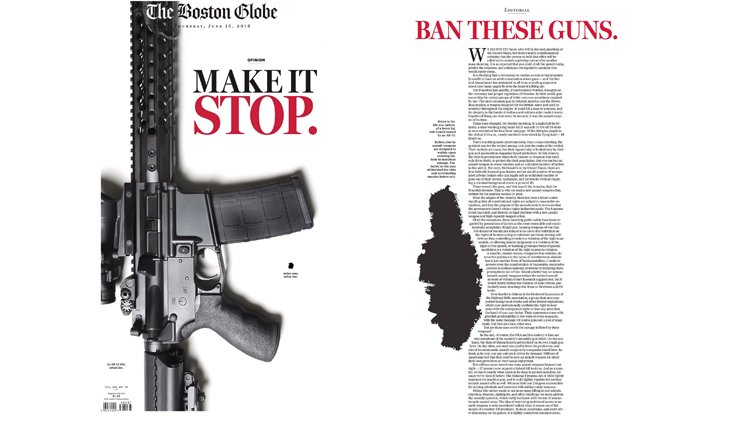
Can you tell us about what has worked for the Globe?
“Chasing Bayla” was a good example, so was the “Make it Stop” editorial that we did. Both of those are examples of everybody coming to the table on the very beginning of the project and asking “What is it that we trying to accomplish here? What is the story we are trying to tell?” not “What is the print feature we are gonna tell?”
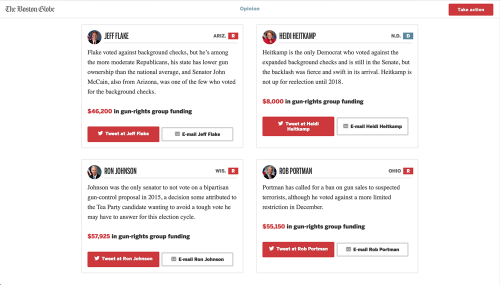
In fact, for “Make it Stop”, that was an editorial. But we didn’t come at it from the approach of saying: “We are going to write this editorial and everybody is going to read it.” It was, “How can we best get the messaging of the editorial across multiple platforms?”
So, for the web, one of the ways was through infographics, visualization, as well as having an action associated with it to have you tweet your congressman or one of the swing senators.
On Twitter, we had a completely different approach. We were going to tweet the victim’s name of every mass shooting involving an AR-15 Rifle in the United States since the AR-15 weapon’s ban was lifted in 2003. That is a very effective way of telling the story on Twitter that would not have been effective in print as much or wouldn’t have been effective on the website. But it worked for that platform.
388 tweets for 388 victims gunned down since the assault weapons ban
was lifted. #makeitstop https://t.co/aKPoV4d0an— The Boston Globe (@BostonGlobe) June 17, 2016
Peter O. Gonzalez-Cruz, 22 years old. Shot 6/12/2016, Orlando, Fla. #MakeItStop
— The Boston Globe (@BostonGlobe) June 17, 2016
Did the “Make it Stop” edition sell better than other editions?
That wasn’t the measurement that we were looking at. The measurement was impact: National debate, national discussion. I know that those congressman and woman who were e-mailed or twitted at were not thrilled, and, in fact, one of them switched her vote. It obviously can’t be tracked if it was us, but it certainly had an impact on her decision-making.
How do you think the industry has evolved to this point where everybody seems to be slicing their audiences?
I think we are near the end of that era. We are 25 years into the Internet and not even close to know where the heck we are going. I have my own theory that I haven’t validated.
The first phase was the Portal Era with CompuServe, AOL. You would be taken to a destination and through that you would experience news. From a revenue standpoint, that’s when we really got the big box ads and the leaderboard ads, and all the advertising that was in destination websites in the same ways that newspapers where destinations as well.
The second era was the Search Era with the Googles, the Yahoo!s. In that era, that launched the Huffington Posts of the world, websites that were very successful of understanding keywords. Through that you also have targeting, real-time bidding advertising that came through that and keyword search advertising.
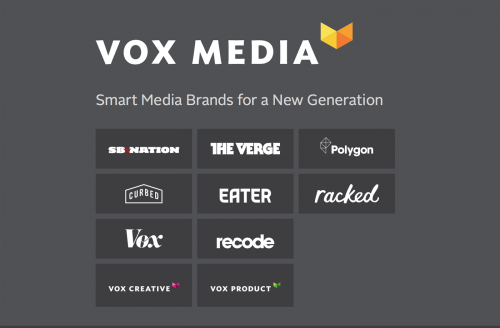
Then, we enter the third era, which was the Social Era. This is where Buzzfeed, Upworthy grew into. From an advertising standpoint, I think we entered into the sponsored content. Both high-end as we see in a website like Quartz, which has premium ads that are really customized and beautiful, but also the low-end like Taboola, which are this keyword dynamic sponsored content, the kind of stuff that you see at the bottom of a website.
… Now we enter the fourth phase, the Brand Era. This is where we are returning to an era of consolidation, where big brands have more value: The New York Times, Vice, The Boston Globe, The Washington Post, Vox.
The brands themselves have more value and allow for a new revenue stream which is creative agency, creative ads, agency type. Vice makes its money by actually being mostly an ad agency, creative ad agency for clients, leveraging the Vice name for that as opposed to their actual content.
When we were in the Social Era, where we had sponsored content as the key advertising source, verticals where a good way to go. But now we are consolidating everything back and I’m not so sure verticals will work anymore.
So, for example, I think the NYMag is going to build out a smart creative agency around NYMag probably, more than it will around Vulture and The Cut and all the rest. They may use those subs to serve their brand, but it’s harder to do it. We at the Globe had some sub-verticals as well. Crux was one that we launched, Stat is still going. They are expensive to manage, support and maintain. As digital advertising becomes a harder and harder revenue play, I think we are going to see a lot of course correction.
How do you see the social media in this landscape?
The news organizations have been quick to shed costs and outsource a lot of their production to the Facebooks of the world. We don’t yet know what the repercussions of that are, although we do know that 80% percent of ad revenue is done through Google and Facebook.
Journalistically, there’s been a lot of research out there by Greg Ip, from The Wall Street Journal, by the Zeynep Tufekci, who has written great stuff about the algorithm bias.
It is important to remember one thing about Facebook in particular. It is a public company that is accountable to shareholders, not to citizens.
In what way does data helps?
Data to me is to inform how you distribute and how you tell a story, but doesn’t necessarily define what the story is. As a journalist you know what the story is, your instinct tells you what the story is, and you chase that. Then it comes again to decoupling the distribution platform from the news-gathering. The data helps you on the distribution platforms, to tell the story and get the most reach you want.
Ultimately, our job is to reach the maximum number of people, whether that is 5 people or 5 million people, who we can influence in order to affect people. As a reporter, as an editor, I want to make sure that people are able to read my stuff and see it, so that I can actually have the impact and the reporting that I want to have. So, the data only helps that to happen.
If you’re actually pissing off some people, that means that they read it and that is a good thing. That is no different than how journalism has always been.
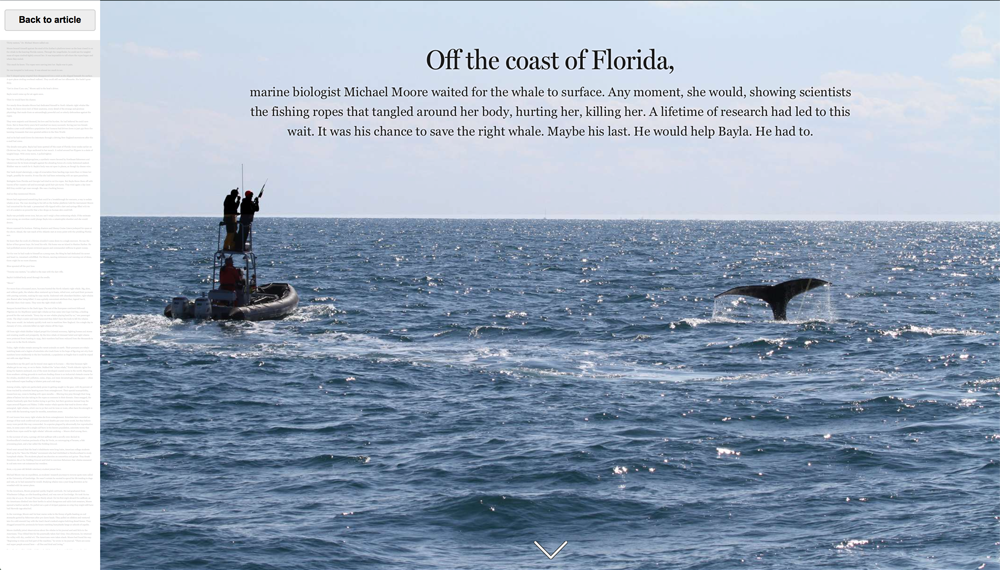
What is your take on paywalls versus micropayments versus crowdfunded journalism?
Ultimately, to me they are not about binary choices of access or no access. They are about value exchange. And the question I think is: how do you create some value with your reader that is respectful, but that also allows you to support the business? It may be micropayments, it may be be a paywall on and off, it may be to watch a 30 second ad. There is no one size fits all.
I can guarantee that a user coming from mobile divide or from reddit will never pay for The Boston Globe ever. Knowing that, what kind of value exchange can I do with that user that they understand that nothing is free and that it costs money to produce? That’s where you get creative.
Maybe it is “give me your e-mail address.” That way we can start to form a relationship and maybe, down the road, he will pay for us. Maybe he won’t and I will sell ads against that e-mail. Or maybe I’ll make him watch for a 15 seconds pre-roll ad. Value exchange is what it is about, how can I create an exchange of value that is respectful to both parties.
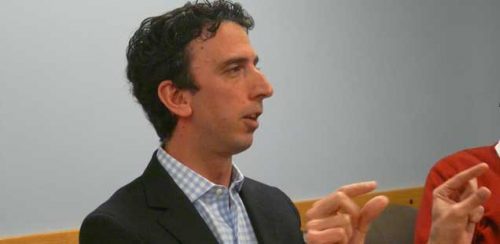
What skills do you see as most essential for the 21st century journalist?
The most important thing is to be adaptive, be agile, be willing to learn new things, be curious. Constantly understand that you are going to shift.
There is a study out of Oxford University, that says that 45% of the jobs in the United States will no longer exist. So, that is a life skill more than even it is a journalistic one, you are going to have to be adaptive in your life to shift.
I like to think I live by that. I started in broadcast, moved into digital, then moved into a print newsroom. The reason why is I just wanted to tell stories and those where the best way at the time to tell stories.
But learn all the stuff. Be curious, find your passions. And be good in a few things, but be adaptable in those areas. It is soft skills, not the hard skills that I care about.
How do you feel about The New York Times looking for digital-first editors in education, gender and climate change?
They are on the right track. This is what a modern editor needs to be about. Not about production, not about performance management, although that is an important part of it too. The role of an editor and the skill required from an editor completely shifted. It is really now about identifying the stories, figuring what are the pieces needed in order to tell a story and being skilled at producing that in all platforms.
It is both having the judgement to understand what the questions are but then also having the instinct to know what the right platforms are to tell those stories. And to be able to tell those stories creatively on those platforms. Most editors, I think, are very platform specific.
What do you wish you had known?
I think what I learned humility, fairness, humanity are wonderful things that actually make you a better leader. You don’t have to be the loudest person in the room, the smartest person in the room and have all the answers and knowledge that you don’t know. It actually makes you more real. I’m grateful to Brian [McGrory, editor of the Globe] and Chris [Christine Chinlund, Managing Editor for News of the Globe] for showing a 34 year-old punk at the time that wisdom counts for a lot.
- SXSW: ‘Excel is okay’ and other tweet-size insights for data journalists and news nerds - March 17, 2018
- NICAR: Data stories from last year that you could be doing in your newsroom - March 13, 2018
- How to scrape Reddit with Python - March 12, 2018
